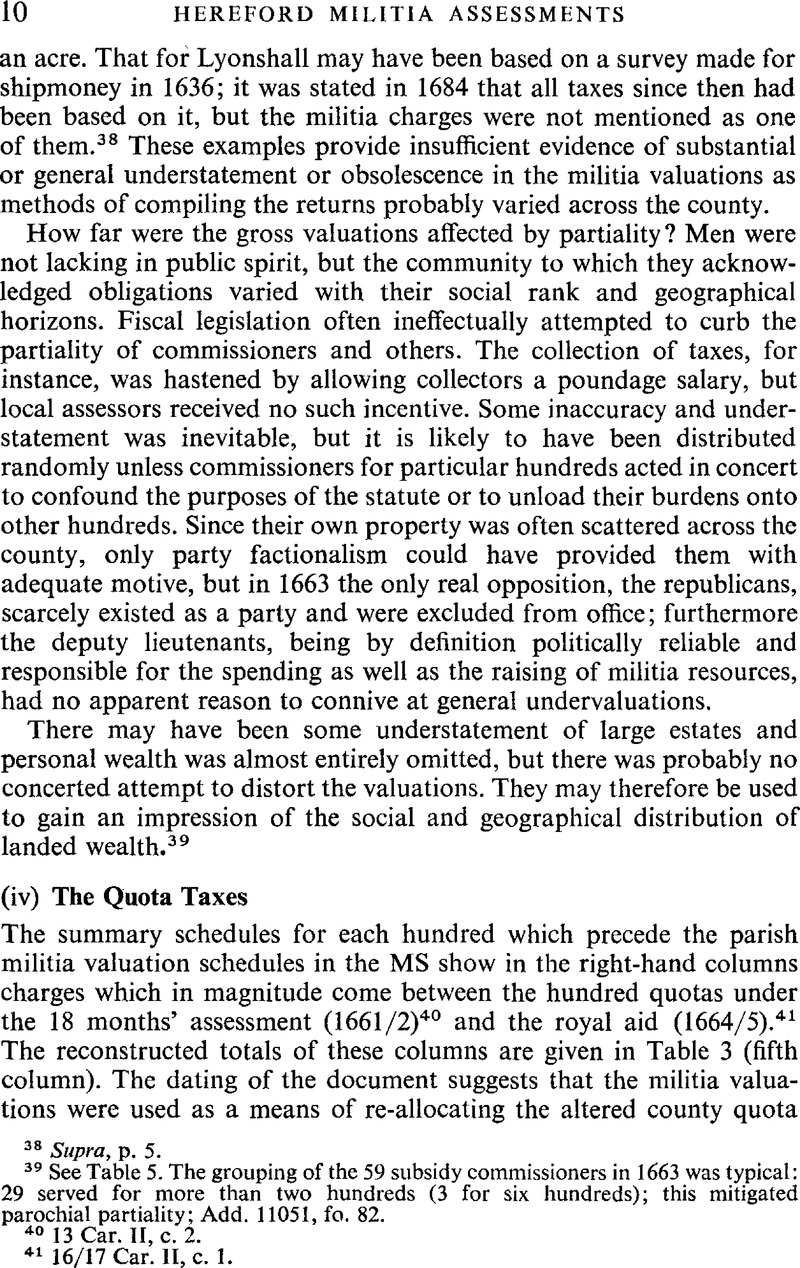No CrossRef data available.
Published online by Cambridge University Press: 21 December 2009

40 13 Car. II, c. 2.
41 16/17 Car. II, c. 1
42 1 Gul. & Mar. (2), c. 1. The hundred and parish quotas allocated in March 1664/5 were revised in May 1665 on the grounds that the city of Hereford had been overcharged by £39 in the first quarter; see Table 3; Add. 11051, fos. 87–121, passim. The Wigmore royal aid schedule summarised in the footnote on p. 133 lists the unrevised parish quotas; Loan 29/49, pf. 4, no. 69/14.
43 Chandaman, C. D., ‘The English Public Revenue, 1660–1688’ (unpublished Ph.D. thesis, London, 1954), p. 412.Google Scholar
44 Acts and Ordinances, 7 04 1649.Google Scholar
45 Chandaman, , op. cit., p. 416Google Scholar; CJ, viii, p. 582.Google Scholar
46 Add. 11051, fo. 11. The purveyance proportions were also explicitly followed by the justices in fixing the hundred quotas for the relief of the Ross plague victims in 1637; Add. 11054, fos. 33–4. The precedent provided by coat and conduct money hundred quotas, in 1627 for example, was not followed in allocating later quota taxes; Add. 11050, fo. 190.
47 See Tables 3 and 4.
48 The southern division of Wigmore hundred was formerly the lordship of Stepleton or Lugharnes.